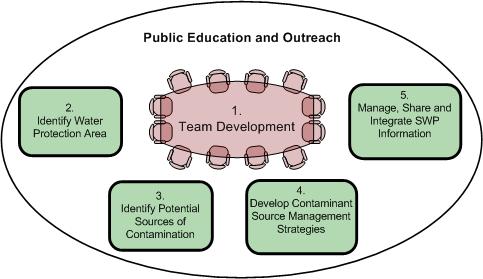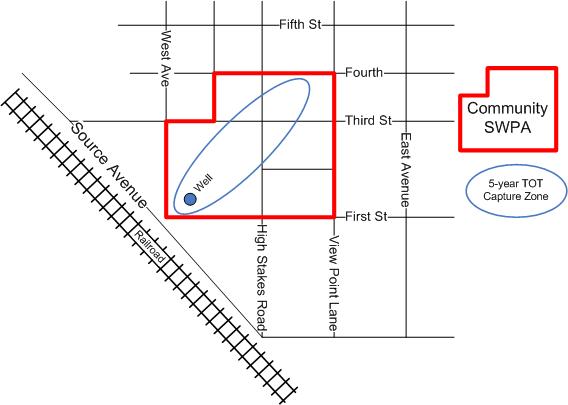Integrated Source Water Protection
What is Integrated Source Water Protection? Integrated source water protection is essentially a coordinated planning effort to address preventable contamination of Nevada's public drinking water sources. Since the majority of public drinking water supply systems in Nevada rely upon ground water, the primary goal of the program is the protection of ground water that is captured by public drinking water wells and springs. Nevada communities must realize that much less effort and money is spent to protect drinking water supplies than to clean them once contamination has occurred |

NDEP encourages county agencies to lead the planning process, in lieu of public water system managers and operators. NDEP envisions a county-wide approach to the community source water protection planning process because the political structure of local government in Nevada promotes local control and management of natural resources through either county or incorporated city entities. These entities generally have the ability and existing mechanisms to provide both regulatory and non-regulatory measures that can directly protect and preserve ground water quality. |
What contaminates ground water? There are numerous pollutants that can contaminate ground water. Some contaminants are a result of improperly disposed of common household products like cleaning products, waste oil, pet waste, fertilizers and pesticides. Others may be used or generated by businesses such as dry cleaners, photo shops, salons, cemeteries, landfills, petroleum storage and handling, etc. Here's a list of Nevada Potential Contaminant Sources. Contaminant sources that are located in or in close proximity to a source water protection area should be clearly identified on community planning maps. What is done to protect the ground water? Maps of the source water protection areas are overlain with other community land use planning and zoning maps. Communities then may adopt strategies to protect these areas by considering the risk of contamination from existing or proposed future land use activities. Communities may desire strategies that are regulatory and/or non-regulatory in nature based upon their knowledge of existing land uses in these areas and their assessment of current water quality and quantity to provide clean drinking water to the community into the future. Examples of regulatory versus non-regulatory management options are outlined in the Integrated Source Water Protection Program guidance. |

